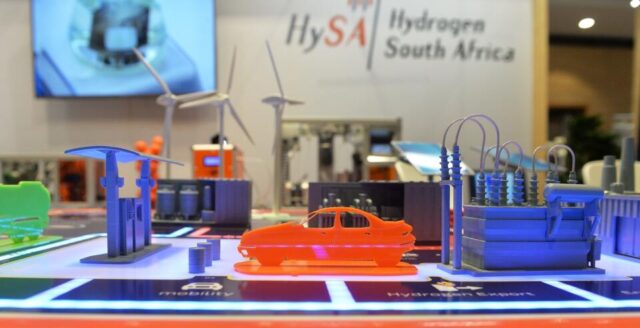According to the Hydrogen Society Roadmap, the aim is to produce 500,000 tonnes per annum of green hydrogen by 2030. The South African government aims to deploy 10GW of electrolysis capacity in the Northern Cape region by 2030 and 15GW by 2040.
By: Given Majola
THE CHEMICAL Industries Education and Training Authority (Chieta) will lead the establishment of a Centre of Specialisation for Green Hydrogen Skills to close the hydrogen skills gap and ensure South Africa has the 138 skills to grow the hydrogen economy.
This comes after the release of a groundbreaking research report mapping the way forward for “Identification of Skills Needs for the Hydrogen Economy“ by the Minister of Higher Education, Science and Technology, Blade Nzimande, earlier this week.
The Northern Cape’s contribution to green hydrogen production is potentially significant and the establishment of a Centre of Specialisation for Green Hydrogen Skills will be a crucial step towards realising this potential.
The Northern Cape aims to produce substantial volumes of green hydrogen for export as part of the commitment to the 2050 energy transition process.
Chieta CEO Yershen Pillay said they would collaborate with the Mining Qualification Authority (MQA) and the Transport Education Training Authority (TETA) to establish this multimillion-dollar centre by next year.
Pillay said this research report underscored the importance of proactive skills development to support South Africa’s transition to a green hydrogen economy.
“By identifying skills needs and collaborating with stakeholders, we aim to ensure that our workforce is adequately equipped to seize the opportunities presented by green hydrogen,” Pillay said.
The Chemical Sector Education and Training Authority (Seta) has also welcomed the release of the report.
The research project’s objective is to determine the skills required for the green hydrogen value chain in South Africa.
It provided insights into the current skills demand-supply dynamics through a qualitative methodology involving literature reviews and stakeholder consultations. It analyses the skills required for the green hydrogen economy.
The report identified Setas as central to the growth of the green hydrogen economy.
It added that 74 degree and diploma programmes were required for the hydrogen economy, 50 of which were already offered in South African institutions.
However, 24 additional programmes are needed to meet the sector’s skills demands fully.
This report, prepared for the department’s Labour Market Intelligence (LMI) Research Programme, addressed the critical skills requirements for South Africa’s transition to a green hydrogen economy.
Speaking at the CSIR in Pretoria earlier this week, Nzimande said the LMI undertook a project to identify skills for the hydrogen economy, in response to the needs of the economy and the labour market.
The report identified 138 new roles in the green hydrogen value chain, including engineers, technicians, tradespeople, specialists, managerial occupations, and elementary-level occupations.
The recognition of 77 occupations not reflected in the Organizing Framework for Occupations (OFO), highlighting the need for additional skills and qualifications.
The most required capabilities included hydrogen properties, behaviour and potential hazards created safety when working with or around hydrogen, knowledge of hydrogen-related regulations, standards and codes, and understanding of electrochemical reactions, processes, and hydrogen production processes.
The hydrogen economy was expected to grow phenomenally in South Africa, and R319 million of the R1.4 trillion of the Just Energy Transition investment plan had already been targeted for this sector.
The global hydrogen economy is experiencing rapid growth, with green hydrogen playing a crucial role in developing a sustainable energy future.
Green hydrogen enables the decarbonisation of hard-to-abate sectors such as heavy-duty transport, cement, steel, mining, refineries, chemicals, agriculture, and plastics.
Recognising the potential of green hydrogen, South Africa is driven to determine how to leverage this resource to aid its path to net-zero emissions and address poverty, unemployment, and inequality challenges.
According to the Hydrogen Society Roadmap, the aim is to produce 500,000 tonnes per annum of green hydrogen by 2030.
The South African government aims to deploy 10GW of electrolysis capacity in the Northern Cape region by 2030 and 15GW by 2040.
The Northern Cape has everything that is needed to make green hydrogen in large quantities: great solar and wind resources, lots of land and provincial and national governments eager to harness the energies of the private and public sectors.
According to a report by National Business Initiative, South Africa could produce green hydrogen for $1.60 per kg by 2030, one of the lowest costs worldwide.
– BUSINESS REPORT








